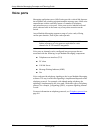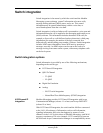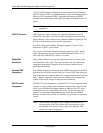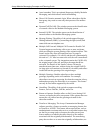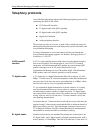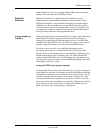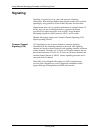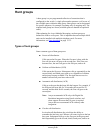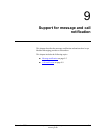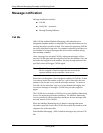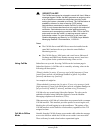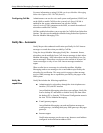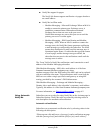
Avaya Modular Messaging Concepts and Planning Guide
8-10 November 2004
Avaya Modular Messaging Concepts and
Planning Guide
Signaling
Signaling is required to set up, clear, and supervise telephone
connections. With analog telephone lines, digital currents (DC) perform
signaling by using protocols such as E&M, loopstart, and wink start.
Digital trunks must convey signaling information in a digital format. To
do this, they can use an analog protocol or a protocol developed
specifically for digital networks, such as QSIG. Avaya Modular
Messaging supports the QSIG protocol with T1 and E1 trunks.
Modular Messaging supports the Common Channel Signaling (CCS)
digital signaling protocol.
Common Channel
Signaling (CCS)
CCS signaling uses one or more channels to transmit signaling
information for the remaining channels in the trunk. Non-signaling
channels are known as bearer channels, and signaling channels are known
as data channels. Therefore, for T1 there are 23 bearer channels and one
data channel known as 23B+D. For E1 there are 30 bearer channels and
one data channel known as 30B+D. Various signaling protocols can be
conveyed in the D channel.
With QSIG, Avaya Modular Messaging uses QSIG supplementary
services (ISO compatible) to convey integration information and to
support Message Waiting Indicator (MWI) and transfers.



